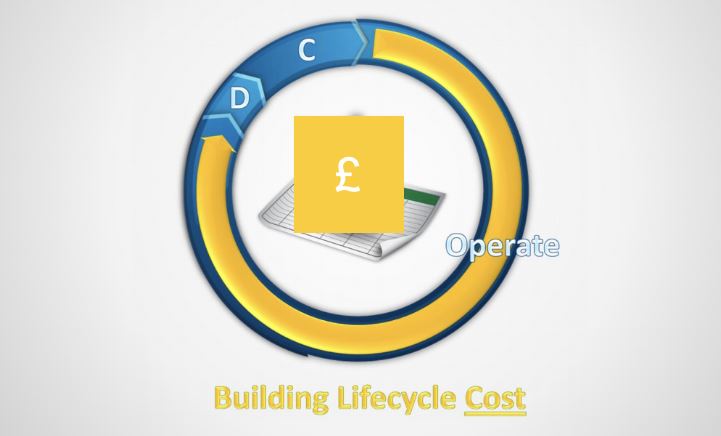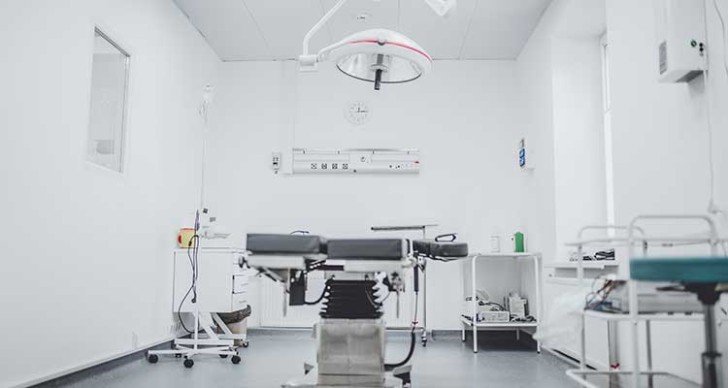With the efficiency of hospitals other healthcare centers in the spotlight, in this blog article, we ask how can the use of BIM methodology streamline the building asset management of those environments. Read the article to find out more about BIM in healthcare and hte benefits of BIM BAM models.
Building Information Modeling (BIM) has transformed the way that buildings are designed and delivered. The same applies to operations and maintenance of a building, even if it’s a less covered aspect of BIM. Broadly speaking, the construction in healthcare capitalizes on the same benefits and co-benefits that BIM provides for the wider construction industry. This post is dedicated to built asset management (BAM) in healthcare facilities and how BIM can deliver better results by integrating a wide range of information related to the physical condition of built assets. What are the general benefits of BIM in a healthcare environment? To situate ourselves, we’ll see what can be achieved by implementing in BIM in a healthcare environment at a more general scale. They all do sound familiar to us:
- The conflicts can be resolved in a digital environment first.
- The end users can be more engaged from the very start of the project by seeing the rooms and facilites before the works begin.
- Deliver on time and reduce the actual time on site.
- Increase productivity and prefabrication
- Allow better cost estimation and ongoing facilities management.
What are the benefits of BIM in asset management?
The relationship between building information modelling (BIM) and asset management should be considered a mutually supportive one and shouldn’t be treated as isolated practices. The data gathered in BIM throughout the design and construction processes is very valuable for facilities and asset management. To be more specific, the benefits of relying on the life cycle approach to BIM and Asset Management, will include:
- Clearer overview of the long-term in-service performance.
- Reduced start-up, construction and operational costs.
- Better life cycle management as a result of a single source of data
Or in other words, with access to a BIM model that contains detailed information about everything related to the building (interconnected systems, associated parts, manuals, relevant documentation, etc.), the asset manager can manage repairs, renovations and costs effectively. If Construction phase is where BIM brings the biggest savings, Operations and Maintenance comes second. The O&M phase benefits are actually the fastest growing as the industry matures. And in the long-run, it’s actually the phase where BIM might become the most beneficial since compared to design and construction phases, it’s the one that lasts the longest cost-wise.
 Image source: Autodesk
Image source: Autodesk
BIM for BAM in healthcare facilities: What information could be integrated?
The in-use phase of BIM provides a vast amount of sector-specific data that could be used to improve the management of healthcare facilities. For example, the integration of information about built asset’s impact on care provision or data and information about the general physical condition of an asset. BIM can integrate a wide range of interdepartmental data relating to asset management and health service performance. There are actually many sources of related information and data, that facilities’ managers use to make decisions. On the one hand, there are the design drawings handed over at the end of the construction, on the other hand, text-based documentation (H&S files, warranties and guarantees, O&M files, records of the repairs). If all this data is incorporated into a digital 3D model of the building, it is a good starting point for the BAM BIM model. However, with the advances in ICT technologies, there’s now a wider range of information relevant to asset management that can be integrated to the BIM models. In that sense, we can arrange the available data in three key themes: - data related to built asset performance (could include information about hard and soft safety, the patient experience, efficiency, effectiveness, organizational governance), - built asset financing data (annual estates return data, maintenance cost data, backlog maintenance cost data, hospital revenue data), - data on built assets’ impact on the quality of care (assessment of the care environment as seen by the patients, patient experience stories, health and safety incident records).
BIM in healthcare: Benefits of BIM BAM models
The advantages of
BIM for the asset management phase are slightly different for those in the design and construction phase. While the key advantages of BIM during the design and construction phases are associated with effective information management, visualization of the design and smoother collaboration between the members of the project team, the benefits associated with BIM for BAM models are more diverse: First, we must keep in mind that visualization itself is not seen as a key benefit here, since buildings and assets are physically observable during the in-use phase. However, for maintenance or repairs, the visualization of spaces and elements is useful during entering and filtering data of a space or element. Second,
BIM BAM models facilitate
collaboration between the asset management team and external organisations who provide asset management services. Up-to-date information is also important for contract negotiations and work scheduling. The more advanced BAM BIM models could lead to better working relationships between the various hospital departments and sharing interdepartamental information. Better collaboration between estates and facilities divisions and senior managers of the organisation could be another aspect that streamlines many processes. Third important benefit is the integration of
interdepartmental data that includes the information on the performance of the physical assets of the estates and its contribution to the quality of healthcare. If we automate the input of new information, it can support a more effective decision-making approach to maintenance management. The fourth use we could give to BAM BIM models is that of a reporting tool. In fact, fully functional BAM BIM models are able to produce various reports to support decision-making at departmental as well as organisational level. So, in conclusion, using BIM in healthcare for BAM models
establish a more strategic and multifaceted decision-making process and eliminate, therefore, the deficiencies characteristic to the more traditional approach. We could go even further and say that the advantages of BAM BIM models are in some ways greater than those of using BIM in the design and construction phases. For example, as a reporting tool, BIM BAM models support in-house decision-making and could also be used for external auditing purposes. However, in order to use the BIM models to their full potential, the hospitals have to make changes in the current practices of data collection and
integrate automated data capturing and feeding techniques to the model.


 Image source: Autodesk
Image source: Autodesk